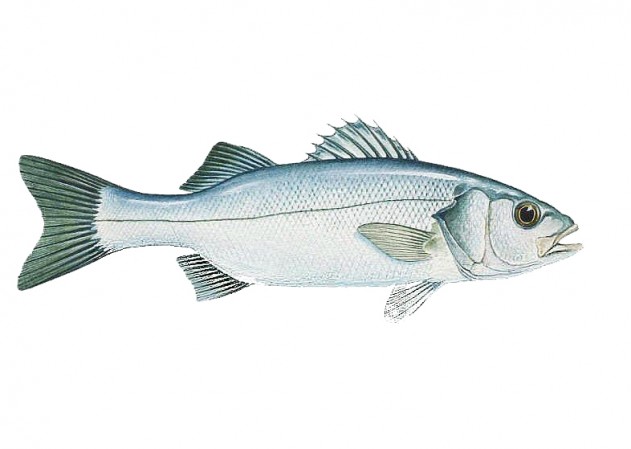Description
European sea bass have elongate body and opercle with 2 flat spines; preopercle with large, forward-directed spines on its lower margin. Posterior edge of opercle finely serrated, lower edge with strong forward- directed denticles. Mouth is terminal, moderately protractile. Vomerine teeth are only anteriorly, in a crescentic band, without a backward extension on midline of roof of mouth. Head is with cycloid scales above. They typically weigh 1 1/2 to 3 pounds and have a silvery skin much like striped bass without the stripes. They have firm, white, mild-flavored flesh without small bones and hold their shape well.
Two separate dorsal fins.
The first dorsal fin has 8 to 10 spines.
The 2nd dorsal fin has 1 spine and 12 or 13 soft rays.
Anal fin has 3 spines and 10 to 12 soft rays.
Caudal fin moderately forked.
Opercle has 2 flat spines.
Lateral line complete with 62 to 74 (usually 70) small scales, but not extending onto caudal fin.
Color silvery grey to bluish on the back, silvery on the sides, belly is white, sometimes tinged with yellow. Young with some dark spots on upper part of body but adults never spotted. A diffuse spot is on the edge of opercle.
Young fish maintain some dark spots on upper part of body, black spots on the back and sides, a feature that can create confusion with spotted bass. This fish’s operculum is serrated and spined. It can grow to a total length of over 1 m (3.3 ft) and 15 kg of weight.
Habitats
The European sea bass are able to frequent coastal inshore waters, and occur in estuaries and brackishwater lagoons. Sometimes they venture upstream into freshwater. They are eurythermic (5-28 °C) and euryhaline (3% to full strength sea water). Adults manifest demersal behavior; inhabit coastal waters down to about 100m depth but more common in shallow waters.
They are found in the littoral zone on various kinds of bottoms on estuaries, lagoons and occasionally rivers. They enter coastal waters and river mouths in summer, but migrate offshore in colder weather and occur in deep water during winter in the northern range. Being not particularly sensitive to low temperature some fish may over-winter in coastal lagoons instead of returning to the open sea. Young fish form school, but adults appear to be less gregarious.
Sea bass are predators, mostly a night hunters and their feeding range includes small fish, prawns, crabs and cuttlefish. Feed chiefly on shrimps and mollusks, polychaetes, cephalopods and crustaceans. Juveniles feed on invertebrates, taking increasingly more fish with age.
Spawning
The European sea bass spawn in batches. Spawning takes place in the spring near the British Isles, and earlier in its southern range. There is only one spawning season per year, which takes place in winter, from December to March in the Mediterranean populations, and up to June in Atlantic populations. Sea bass spawn small (1.02-1.39 mm) pelagic eggs in water with salinities lower than 35%, near to river mouths and estuaries or in littoral areas where the salinity is high (>=30%). The females are mature at age 5 to 8 years, whereas for males this range is lowered to 2-4 years. The spawning males are usually 2 times more than spawning females. Juveniles reach 400-450 g in 18-24 months.

